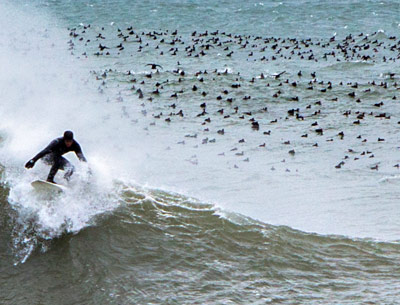To ‘Have’ and to Hold, Life Lists and the Birder’s Vernacular

Johnny Rade is Montauk’s undisputed king of rod-and-reel commercial fishing. He’s “high-hook” in dockside parlance, a man who has been fishing the area for a half century, knows the bottom features like the palm of his hand, and the tides. He can smell weather coming, and he can tell you what kind of fish is mouthing his bait before he sets the hook. In short, he’s a fishing seaman, a “salt.” Do you think it strange then, that John Rade is a birder? “I had six juncos this morning. Six!” he said last week while standing in line at Becker’s Hardware store in Montauk holding two big bags of birdseed in his powerful hands. “I feed them all year. I’ve got robins, five blue jays, and cardinals,” he said meaning in his yard after the big snow, and with pride in his piercing blue eyes. Wasn’t it Odysseus, when, turning his back on the sea — and who could blame him — swore that he would carry an oar landward and put down roots when and where a person asked him what the oar was for? I asked John if he thought it was because of all the time he’s spent at sea that he was so passionate about the birds in his backyard, the species that nest in the trees and bushes that grow from his slice of terra firma. He pondered this for a few seconds and said, yes, that was possible, but then again he liked seabirds too. Bill Becker’s cash register was adding up snow shovels and salt while this discussion was going on, John generously waving people ahead of him while we talked birds. He asked if I’d seen the vast rafts of “coots,” the local name for sea scoters, black sea ducks, so many dotting the surface south and east of the Montauk Lighthouse a few weeks ago that the sea looked like it could use a shave. “The farther east I went, the more there were. Sand eels,” he said, the likely reason. We talked about the coots’ amazing submarine swimming ability, flying under water with their powerful wings after small fish and bottom vegetation. And yet, there were relatively few gannets this season, we agreed. Strange, because there were herring, their favorite food, around in late fall, weren’t there? I asked. He smiled knowingly. Yes, he said, there were herring, but nothing under them to force them to the surface, no frenzy of feeding bluefish and bass. They were out of synch this year — the herring, and the big fish that feed on them, and those white, swept-winged dive-bombers, the blue-billed gannets, whose flocks some years look like white tornados touching down on the sea as they cascade out of the sky, the surface erupting as they enter to go deep after the oily herring. “I’ll tell you what I had, I had seals,” John said. He told about the day while catching herring outside the harbor entrance he had 11 seals around his boat. “Big ones, 300-pounders.” “I have” — that’s how birders talk. Did you ever listen to them bragging their life lists? “Yesterday I had an oyster catcher,” one might crow. But, today he or she “has” an oyster catcher on the life list. Birdwatchers are able to possess birds just by seeing them, even through binoculars from great distances. What a great concept. What a treasure. I left Becker’s thinking about Johnny Rade’s vast treasure, the life list of seals, land birds, sea birds, and finally the fish he sees underwater using the sonar of his 50-plus years at sea. These he knows how to catch.
